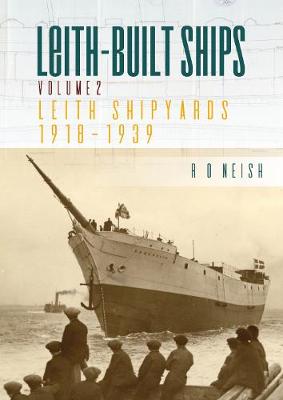This volume includes some very famous ships with tales of adventure and new trade routes, also sadness, the launch and then the loss of the largest sailing ship ever built in a British shipyard - the five-masted auxiliary sailing barque, Kobenhavn. It recounts the days when shipbuilding should have flourished and into the tough times of the Great Depression. It remains a testimony to the skill and determination of the people who built the ships and those who served on them.
The fortunes of the three main shipyards are followed through good times to eventual closure or assimilation by the man who would open up the shipyard that took his name. Henry Robb Ltd, shipbuilders and engineers, began without a yard in which to build ships, but eventually took over firstly the old S&H Morton Shipyard, now occupied by Hawthorns & Co. Ltd. That gave Robb control of the Victoria Shipyard, and a few years later he would take over the Cran & Somerville yard, before acquiring the plant and goodwill of the Ramage & Ferguson Shipyard - the cream of the Leith shipyards.
This last yard would always have a ship on one of its slipways; at the peak they had nine slips, and were pioneers in the building of diesel-powered coasters. Always innovative and with some of the best craftsmen in the industry, the shipyard of Henry Robb quickly acquired the reputation as builders of special ships.
Leith Shipyards 1918-1939 continues the chronological story begun in Volume I and provides a fascinating illustrated story that reveals the remarkable and ongoing story of shipbuilding for which Scotland and the UK were renowned.
- ISBN13 9781849954815
- Publish Date 30 April 2021
- Publish Status Active
- Publish Country GB
- Imprint Whittles Publishing
- Edition 2nd New edition
- Format Paperback
- Language English
